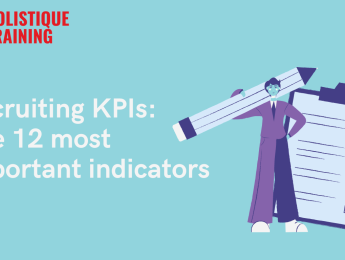- Table of Contents
- What Is the Time Value of Money?
- The Mechanism Behind TVM
- Opportunity Cost: The Essence of TVM
- Inflation: The Erosion of Purchasing Power
- Synthesis of Opportunity Cost and Inflation
- The Significance of TVM
- Leveraging TVM: A Guide for Investors
- Comparing Investment Opportunities
- Assessing Risk
- Determining Fair Value
- Making Long-Term Investment Decisions
- Projecting Cash Flows and Returns
- Adapting Strategies to Economic Changes
- The Formula Behind TVM
- A Real-Life Example
- Behavioural Economics and TVM
- Cognitive Biases and TVM:
- Anchoring and Adjustment in TVM:
- Herding Behaviour and TVM:
- Mental Accounting and TVM:
- Overcoming Behavioural Biases with TVM:
- Incorporating Behavioural Insights in Financial Products:
- Behavioural Economics in Investment Advising:
- The Role of Emotional Intelligence in TVM:
- Ethical Considerations and Behavioural Economics:
- Embracing the Power of TVM
Imagine you have two options: receiving $100 today or receiving $100 a year from now. Which option would you choose? Most of us would instinctively opt for the $100 today. But why is that? This decision is rooted in a fundamental concept of finance known as the Time Value of Money (TVM). In this comprehensive guide, we will delve deep into the intricate workings of TVM, its significance in the world of finance, how investors can harness its potential, and how to calculate it effectively.
What Is the Time Value of Money?
At its core, the Time Value of Money (TVM) is a financial principle that acknowledges that money today holds a different worth than money in the future. In other words, a dollar received today is more valuable than the same one received at some point. This concept is not a mere financial abstraction; it has practical implications underpinning various decision-making aspects, ranging from personal finance to complex business investments.
The Mechanism Behind TVM
Understanding the intricacies of the Time Value of Money (TVM) requires delving into its fundamental components. At the heart of TVM lie two crucial concepts: opportunity cost and inflation, which together paint a comprehensive picture of why a dollar today is worth more than a dollar tomorrow.
Opportunity Cost: The Essence of TVM
Opportunity cost is the cornerstone of TVM. It embodies the principle that money possesses potential. When you receive a sum of money today, you can invest it and earn returns. This investment could be in stocks, bonds, real estate, or other income-generating assets. By investing, your money doesn't just stay stagnant; it works for you, multiplying over time. For instance, if you invest $100 today and grow annually at 10%, you'd have $110 a year later. Thus, the option of having that $100 today rather than in the future is inherently valuable because it can generate additional wealth through investments.
Inflation: The Erosion of Purchasing Power
Inflation adds another layer of complexity to the concept of TVM. It's the gradual increase in prices of goods and services over time, effectively reducing the purchasing power of money. Suppose the inflation rate is 3% annually. This means that a basket of goods that costs $100 today will cost $103 a year from now. Therefore, inflation diminishes your money's ability to buy goods and services over time. Consequently, the same amount of money will buy fewer goods in the future, highlighting the importance of considering TVM in financial decisions.
Synthesis of Opportunity Cost and Inflation
When the opportunity cost and inflation are synthesised, the rationale behind TVM becomes crystal clear. By receiving money today, you can invest and earn returns, safeguarding your funds against the erosive effects of inflation. Waiting for the same amount in the future means forgoing these potential earnings and, in essence, losing money's actual value due to inflation.
Consider a practical scenario: you're offered a choice between receiving $1,000 today or $1,200 five years from now. The decision isn't merely about the numerical difference; it's about recognising that $1,000 invested wisely today could grow significantly over five years, potentially surpassing the $1,200 offered in the future. TVM compels you to evaluate the present worth of these future sums, factoring in both the opportunity cost and the impact of inflation, ensuring you make financially prudent decisions.
Factor | Description |
Opportunity Cost | Money grows through wise investments. |
Inflation Impact | Money’s value diminishes due to inflation |
Present Value | Current worth oof future cash flows. |
Future Value | value of investments at a future date. |
Discount Rate (r ) | Rate at which future cash fellows discounted. |
Time Period (n) | Number of periods over which calculations are made. |
Compound Interest | Earninig interest on both principal and interest |
Table 1: Mechanism behind TVM
The Significance of TVM
The Time Value of Money (TVM) isn't just a theoretical concept confined to finance textbooks; it's a powerful principle with far-reaching implications for our everyday financial decisions and long-term investment strategies. Let's delve deeper into its significance and explore how it plays a pivotal role in shaping our financial landscape.
Evaluating Borrowing Decisions
Imagine you're planning to buy your dream home and are considering taking out a mortgage to finance the purchase. At first glance, you might be tempted to focus solely on the interest rate offered by the lender. However, this approach fails to capture the complete picture. The Time Value of Money introduces the notion that a dollar today is worth more than the same dollar tomorrow due to its potential to earn returns. Therefore, considering the TVM can help you recognise the real cost of borrowing over time when assessing borrowing options.
By incorporating TVM into your decision-making, you'll gain insight into the future value of your interest payments. This can lead you to choose a mortgage with terms that might have a slightly higher interest rate but result in lower overall payments due to their present value. In essence, TVM empowers you to make financially savvy choices by revealing the long-term consequences of seemingly simple decisions.

Unmasking Hidden Costs
Have you ever been tempted by a "buy now, pay later" offer? While these deals might sound appealing on the surface, understanding the Time Value of Money can help you see through the façade and reveal the hidden costs lurking beneath. Deferred payment plans often come with added interest or fees, which can significantly inflate the actual cost of the item.
By assessing the future value of these payments in present terms, TVM assists you in deciphering whether the convenience of postponing payments is truly worth the extra expense. This knowledge enables you to make informed choices about embracing such offers or seeking more transparent payment alternatives.
Planning for Retirement
Retirement planning is a prime arena where the Time Value of Money takes centre stage. Picture yourself contributing to a retirement account like a 401(k) or an IRA. While retirement might seem distant, TVM underscores the importance of starting early. Contributions made earlier in your career have more time to compound and grow, accumulating greater value over time.
Conversely, delaying contributions until later means missing out on the potential benefits of compounded growth. Understanding TVM compels you to take action sooner rather than later, ensuring that your future financial security is built on a solid foundation.
Making Informed Investment Choices
Investors constantly seek opportunities to grow their wealth, and the Time Value of Money provides them with a powerful analytical tool. When evaluating potential investments, TVM allows investors to compare and contrast different assets by bringing all future cash flows to their present value equivalent. This enables a more accurate assessment of an investment's potential returns, factoring in risk, inflation, and the time value of money.
Moreover, TVM facilitates estimating an investment's internal rate of return (IRR) and net present value (NPV). These metrics aid in determining the viability of an investment project or business endeavour, helping investors make decisions grounded in quantifiable data rather than gut feelings.
Guiding Financial Goal Setting
Setting financial goals is a fundamental step towards financial success. The Time Value of Money (TVM) can guide you in defining realistic and achievable objectives. By considering the TVM, you'll be better equipped to set target amounts that account for future purchasing power and inflation.
Whether you're saving for a major purchase, a child's education, or retirement, understanding the TVM ensures that your financial goals are aligned with the shifting dynamics of money's value over time. This proactive approach positions you for a more secure financial future.
Leveraging TVM: A Guide for Investors
Investors navigate a complex landscape where decisions must be based on careful analysis and foresight. The Time Value of Money (TVM) serves as a beacon, guiding investors through the intricate maze of investment choices, risks, and valuations. Here's how investors can leverage the power of TVM to make informed and strategic decisions:
Comparing Investment Opportunities
Investors constantly seek avenues where their money can grow. TVM offers a systematic approach to compare these opportunities. By discounting the future cash flows of different investments back to their present values, investors can effectively compare their potential returns. For instance, if Investment A promises $1,500 in two years and Investment B promises $1,800 in three years, TVM enables investors to evaluate which investment holds more value in present terms. This comparative analysis forms the bedrock of intelligent investment decisions.
Investment | Potential Returns | Risk Level | TVM Analysis |
Option A | 8% annually | Medium | Positive |
Option B | 12% annually | High | High Rewards, High Risk |
Option C | 5% annually | Low | Stable, Low Returns |
Table 2: Example comparison of investment options
Assessing Risk
Every investment comes with a degree of risk. Higher-risk investments, while potentially lucrative, demand a closer examination of their potential returns concerning the risks involved. TVM assists investors in this assessment. By discounting future returns at an appropriate rate that reflects the risk, investors can gauge whether the expected returns justify the associated risks. For instance, if Investment C offers a 15% return but carries significant volatility, TVM helps understand whether this return compensates adequately for the risk, ensuring a balanced and informed decision-making process.
Determining Fair Value
Determining the fair value of an investment is crucial. Whether it's stocks, bonds, or real estate, understanding the time value of future cash flows is essential for accurate valuation. TVM provides the framework to compute this fair value. For instance, in the case of stocks, investors can project future dividends, discount them to present value, and compare this value with the current stock price. If the present value derived from future cash flows is higher than the current market price, the stock might be undervalued, signalling a potential investment opportunity. This method ensures investors are not overpaying for assets, aligning their investments with their intrinsic worth.
Making Long-Term Investment Decisions
Investors often face the dilemma of choosing between short-term gains and long-term stability. TVM plays a pivotal role in making these decisions. For long-term investments like retirement accounts or pension funds, TVM emphasises the importance of starting early. Contributions made today have the potential to grow significantly over time due to compounding, ensuring a robust financial future. By understanding TVM, investors are encouraged to adopt a long-term perspective, recognising the immense value of compounding and the significance of consistent, early investments.
Projecting Cash Flows and Returns
In business investments, understanding future cash flows is essential for strategic planning. TVM assists in projecting these cash flows accurately. Businesses can make precise financial projections by discounting anticipated revenues and costs to their present values. Moreover, when assessing the feasibility of a new project, TVM aids in estimating the Net Present Value (NPV) and Internal Rate of Return (IRR). A positive NPV indicates profitability, while a higher IRR suggests a potentially lucrative venture. Investors armed with these calculations can confidently decide whether to invest in new projects or initiatives, ensuring their capital is employed effectively for maximum returns.
Adapting Strategies to Economic Changes
Economies are dynamic and subject to fluctuations and changes. In such an environment, investors need strategies that can adapt. TVM equips investors with the flexibility to adjust their approaches. During periods of high inflation, for example, TVM highlights the urgency of investments that outpace inflation rates, preserving the purchasing power of money. Similarly, understanding TVM guides investors towards low-risk investments in periods of economic downturn, ensuring capital preservation in uncertain times. By integrating TVM into their strategies, investors can confidently and resiliently navigate the ever-changing economic landscapes.
In the realm of finance, knowledge is power. The Time Value of Money is a potent tool, transforming complex numerical data into meaningful insights. For investors, it's not merely a theoretical concept but a practical guide, illuminating the path to sound financial decisions. By leveraging TVM, investors gain a nuanced understanding of investments, risks, and valuations. They can discern hidden opportunities, assess risks accurately, and make strategic decisions that align with their financial goals. Mastering TVM is akin to wielding a finely tuned compass in the vast ocean of investments, ensuring investors navigate towards prosperity and financial security.
The Formula Behind TVM
The Time Value of Money is quantified using a formula that involves several variables:
PV = FV / (1 + r)^n
Where:
PV = Present Value
FV = Future Value
r = Discount Rate (interest rate)
n = Number of time periods
This formula encapsulates the process of discounting future cash flows back to their present value based on the chosen discount rate.
A Real-Life Example
Let's put theory into practice with an example. Consider an individual who is considering purchasing a five-year bond that pays $1,000 at the end of each year. If the prevailing interest rate is 6%, how much should they be willing to pay for the bond?
Using the TVM formula, we can calculate the present value of the future cash flows:
PV = $1,000 / (1 + 0.06)^1 + $1,000 / (1 + 0.06)^2 + $1,000 / (1 + 0.06)^3 + $1,000 / (1 + 0.06)^4 + $1,000 / (1 + 0.06)^5
After performing the calculations, the total present value is approximately $4,212.36. This means that, considering the prevailing interest rate, the individual should be willing to pay up to $4,212.36 for the bond to make the investment worthwhile.
Behavioural Economics and TVM
In the realm of financial decision-making, rationality often clashes with the intricacies of human behaviour. Behavioural economics explores the psychological factors that influence economic choices. When merged with the Time Value of Money (TVM), it sheds light on why people deviate from rational financial decisions, providing essential insights for economists, policymakers, and everyday individuals.
Cognitive Biases and TVM
Cognitive biases are inherent shortcuts in human thinking. When applied to TVM, these biases can lead to suboptimal financial choices. For example:
- Present Bias: People tend to overvalue immediate rewards over future gains. Understanding this bias is crucial for financial planners and educators aiming to encourage long-term investments.
- Loss Aversion: People fear losses more than they value equivalent gains. In TVM, this might lead to individuals avoiding investments due to the fear of potential future losses and missing out on opportunities for significant gains.
Anchoring and Adjustment in TVM
Anchoring occurs when individuals rely too heavily on the first piece of information encountered. In TVM, this could manifest in sticking rigidly to initial investment plans despite changing market conditions. Behavioural economics prompts investors to reassess their investment choices and adapt to new information regularly.
Herding Behaviour and TVM
Herding behaviour, where individuals follow the actions of a larger group, impacts market trends. During market bubbles, this behaviour can lead to inflated asset prices. Understanding this phenomenon helps investors avoid succumbing to market euphoria, making decisions based on careful analysis rather than following the crowd.
Mental Accounting and TVM
Mental accounting involves categorising money into different mental 'accounts' based on subjective criteria. In TVM, this can lead to compartmentalising future gains, not considering the overall impact on one's financial portfolio. Behavioural economics teaches investors to view their investments holistically, ensuring each decision aligns with their overarching financial goals.
Overcoming Behavioural Biases with TVM
Understanding these biases enables the development of strategies to counter their effects:
- Education and Awareness: Financial education programmes can inform individuals about these biases, empowering them to recognise and mitigate their impact on financial decisions.
- Nudges and Choice Architecture: Policymakers can design choice environments that gently guide individuals towards more rational decisions. For instance, opt-out retirement savings plans encourage individuals to save by default, addressing their tendency towards inertia.
Incorporating Behavioural Insights in Financial Products
Financial institutions can design products that accommodate behavioural biases, encouraging better financial habits. For instance, retirement plans with automatic contribution escalations align with individuals' tendency to procrastinate financial decisions.
Behavioural Economics in Investment Advising
Investment advisors can leverage behavioural insights to tailor advice. For instance, when recognising clients' aversion to losses, advisors can emphasise low-risk, stable investments that align with their clients' psychological comfort zones.
The Role of Emotional Intelligence in TVM
Emotional intelligence, the ability to recognise and manage emotions, is crucial in financial decision-making. Emotionally intelligent investors can navigate the volatility of markets with resilience, avoiding impulsive decisions driven by fear or euphoria. Behavioural economics underscores the significance of emotional intelligence in rational decision-making, emphasising its role alongside numerical analysis.
Ethical Considerations and Behavioural Economics
Understanding the psychological aspects of financial decision-making raises ethical questions. Policymakers and financial institutions are responsible for designing products and policies ethically, ensuring they do not exploit individuals' biases. Behavioural economics, therefore, prompts discussions on ethical standards in the financial industry, leading to more responsible practices.
Integrating behavioural economics with the time value of money emerges a holistic view of financial decision-making. Recognising the human element in economic choices equips individuals, policymakers, and financial professionals with tools to bridge the gap between rational analysis and human behaviour. This nuanced understanding lies the key to empowering individuals to make better financial choices, ensuring their investments align not just with numerical forecasts but with their psychological inclinations and long-term goals.
Embracing the Power of TVM
In conclusion, the Time Value of Money is an essential concept that underpins various financial decisions and investment strategies. Understanding the dynamics of TVM empowers individuals and investors to make informed choices that account for the changing value of money over time. Individuals can confidently navigate complex financial landscapes by considering opportunity cost, inflation, and discounting future cash flows. So, the next time you encounter a financial decision, remember the intrinsic value that time imparts to money.
If you're eager to deepen your understanding of the financial world, then you need to check out our course, ‘Accounting and Finance for Non-Financial Professionals.’ This comprehensive course will demystify complex financial concepts like TVM, equipping you with the knowledge and skills to make sound financial decisions professionally or personally. Don't just navigate the financial landscape—master it with our expert-led course. Your financial empowerment starts here.
























